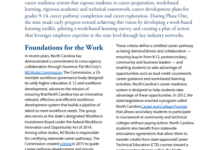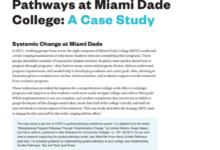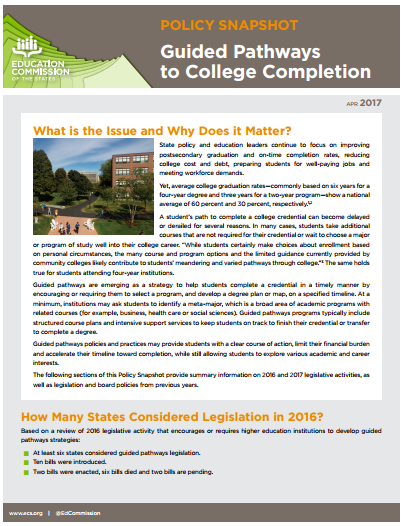Guided pathways are emerging as a strategy to help students complete a credential in a timely manner by encouraging or requiring them to select a program, and develop a degree plan or map, on a specified timeline. At a minimum, institutions may ask students to identify a meta-major, which is a broad area of academic programs with related courses (for example, business, health care or social sciences). Guided pathways programs typically include structured course plans and intensive support services to keep students on track to finish their credential or transfer to complete a degree.
This report from the Education Commission of the States examines state policies related to guided pathways and concludes that in 2016 two bills were enacted, ten were introduced, and at least six states considered guided pathways legislation. The report provides an additional update from the 2017 legislative session and profiles states that have passed related policies in recent years.







